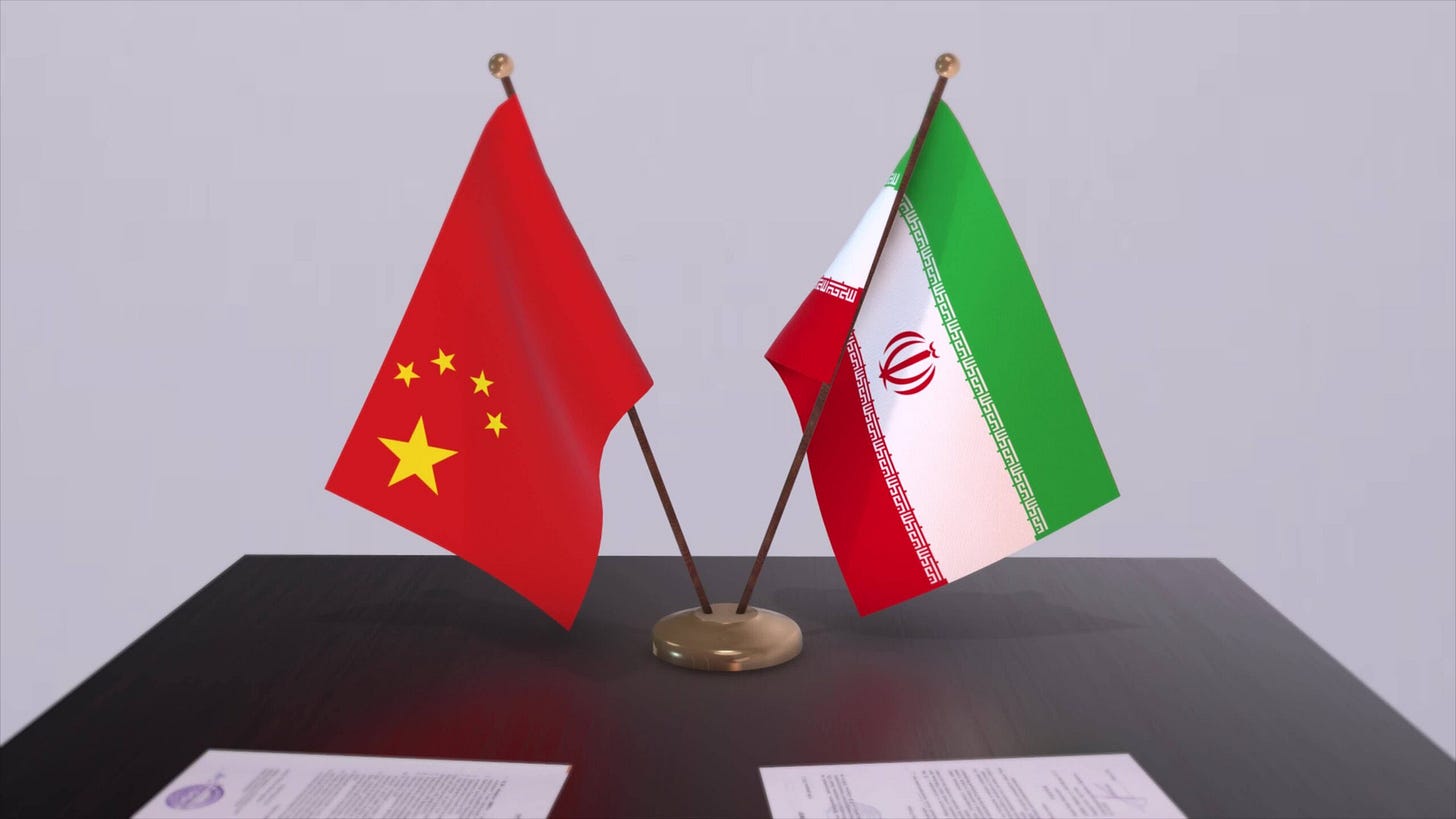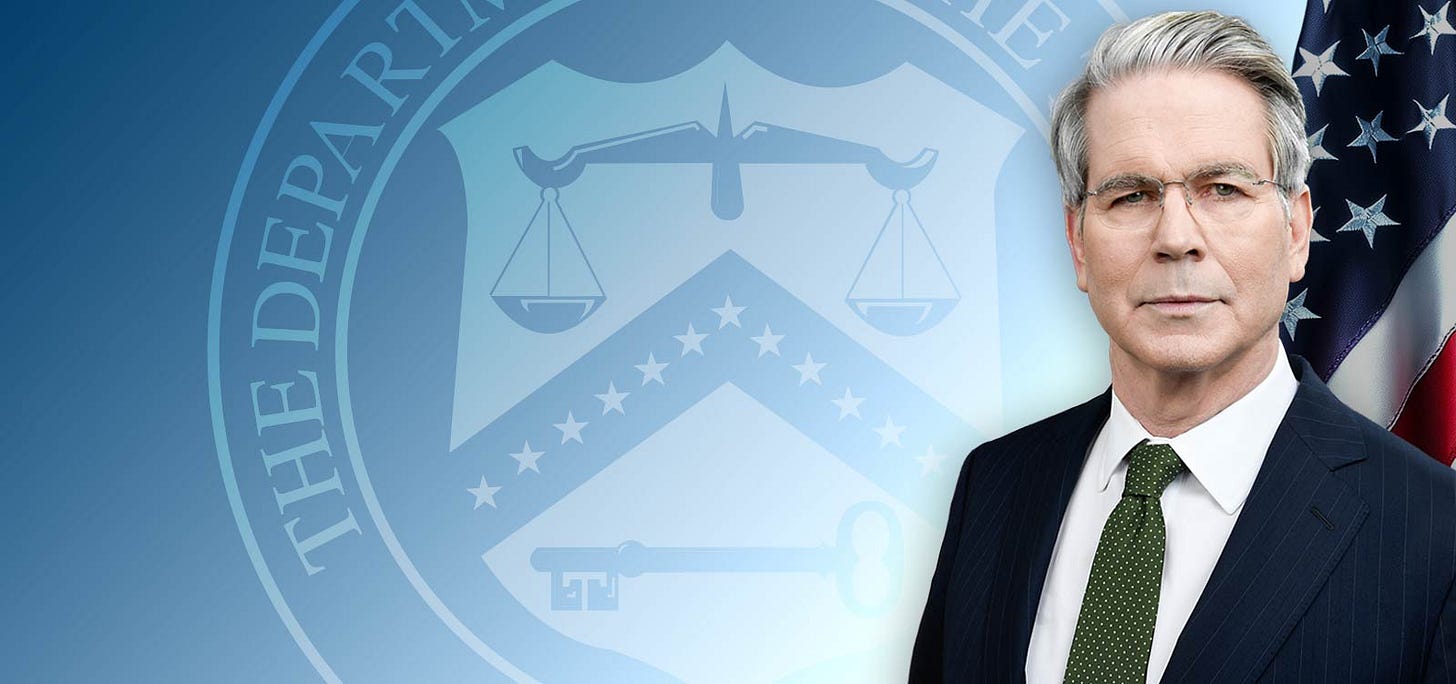The China in MENA Brief - October 6, 2025
Inside China’s Secret Sanctions Evasion Network and the Trump Administration’s Counteroffensive to Reclaim U.S. Financial Dominance
1. How China Circumvents U.S. Sanctions to Keep Iranian Oil Flowing
Between 2023 and 2024, China quietly developed a covert oil-for-infrastructure system with Iran that allows Beijing to purchase billions of dollars’ worth of Iranian oil while evading U.S. sanctions.
According to an October 5 Wall Street Journal report, Chinese state firms import Iranian oil—often disguised as Malaysian through ship-to-ship transfers near Malaysian waters—and pay not in cash but through infrastructure projects built inside Iran. The system relies on a Chinese state insurer, Sinosure, which channels funds through a financial vehicle known as “Chuxin” to pay Chinese contractors on Iranian soil.
This arrangement delivered as much as $8.4 billion in projects to Iran last year, effectively turning oil sales into sanctioned-proof barter. The scheme undermines Washington’s sanctions regime and reinforces the growing strategic partnership between Beijing and Tehran—two of America’s chief geopolitical adversaries.
Strategic Takeaways
China’s Sanctions Evasion Network Is Expanding
Beijing’s use of barter mechanisms and state-backed insurers reflects a broader pattern: building parallel systems to shield itself and its partners from U.S. financial pressure. The model could easily be replicated for Russia, Venezuela, or other sanctioned regimes.Erosion of U.S. Financial Leverage
By decoupling from dollar-based transactions, China is chipping away at one of Washington’s most powerful tools—control over the global financial system. This weakens the enforcement power of future sanctions campaigns unless the United States strengthens secondary sanctions enforcement and reasserts SWIFT dominance through coordinated financial diplomacy.Tehran’s Economic Lifeline
The barter system gives Iran both economic breathing room and political legitimacy, showing that defiance of U.S. sanctions can pay off when backed by China. This keeps the regime afloat despite Western isolation.
2. U.S. Treasury Strikes Back: Trump Administration Launches Global Offensive to Cripple Iran’s Missile Empire and Expose China’s Role
Between September and October 2025, the U.S. Department of the Treasury, in coordination with the Departments of State, Homeland Security, and the FBI, launched a significant sanctions action targeting Iranian weapons procurement networks that support the regime’s ballistic missile and military aircraft programs.
The move follows the September 27 “snapback” of previously lifted U.N. Security Council sanctions on Iran—restoring international restrictions on Tehran’s nuclear, missile, and arms activities after the regime’s failure to comply with the 2015 nuclear deal (JCPOA). The Treasury’s Office of Foreign Assets Control (OFAC) designated 21 entities and 17 individuals across Iran, China, Hong Kong, Türkiye, Germany, Portugal, and Uruguay for their role in acquiring U.S.-origin electronics, guidance systems, and aircraft components for Iran’s Ministry of Defense and Armed Forces Logistics (MODAFL) and its subsidiaries.
OFAC identified three primary procurement networks linked to the Aerospace Industries Organization (AIO)—responsible for Iran’s solid-fueled missile program—and the Iran Helicopter Support and Renewal Company (PANHA), which builds and maintains aircraft for the IRGC. These networks sourced components including gyroscopes, accelerometers, and microelectromechanical systems (MEMS) used in Iran’s missile guidance and UAV programs. One network even illicitly obtained a U.S.-manufactured helicopter for modification and deployment by Iranian forces.
This action builds on National Security Presidential Memorandum 2, directing U.S. agencies to deny Iran access to weapons and financing that sustain its military buildup and proxy warfare. Secretary of the Treasury Scott Bessent underscored that, under President Trump’s leadership, the administration will continue to “deny the regime weapons it would use to further its malign objectives.”
Strategic Takeaways
Reassertion of U.S. Sanctions Leadership
The snapback and new OFAC designations mark a return to maximum enforcement—a clear signal that the U.S. is once again leveraging its full financial and legal power to isolate Iran and its enablers. This is a reversal of the weak deterrence that characterized the previous administration’s Iran policy.Dismantling China-Iran Procurement Channels
Multiple sanctioned entities operate out of China and Hong Kong, underscoring Beijing’s continued role as Tehran’s lifeline. By targeting these intermediaries, Washington is directly confronting China’s complicity in arming Iran and circumventing international export controls.Strengthening the Interagency Strike Capacity
The joint action between Treasury, State, DHS, and the FBI reflects a more integrated enforcement model. This is the kind of whole-of-government response envisioned by “America First” national security doctrine—using every lever of power to disrupt hostile networks.Undermining Iran’s Military Modernization
By cutting off access to dual-use electronics, avionics, and missile guidance systems, the sanctions aim to cripple Iran’s indigenous production capacity—delaying or degrading its ability to field advanced UAVs and long-range missiles that threaten U.S. forces and allies.Rebuilding Deterrence through Economic Force
The designations reinforce the principle that financial warfare can achieve strategic results without deploying troops. They demonstrate to allies and adversaries alike that the United States retains unmatched control over the global financial system—and will use it to defend its interests.
© 2025 The China in MENA Project. All rights reserved.
Newsletter every Monday & Friday ( X: @chinainmena)
Contact: riboua@chinainmena.com



